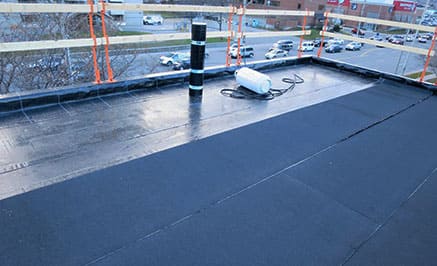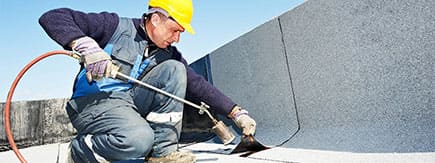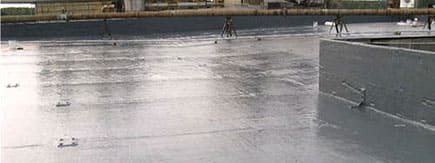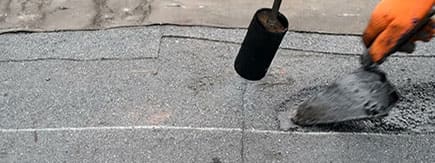Bitumen in Roofing
To meet the diverse requirements of the roofing and waterproofing industries, consistent bitumen quality and effective logistics are vital factors. The vast majority of the world’s bitumen supply – around 85 percent – is used in road applications. But bitumen’s properties also make it ideal for use in a wide range of applications. For example, Nuroil bitumen is used to protect against moisture, sound, electricity and fire in materials such as pond linings, sound dampening panels, high-voltage electrical cables and wind barriers for buildings. In fact, after roads, the segment that uses the most bitumen each year – around 10 percent – is the roofing industry.
Bitumen roofing products can be applied using cold, soft or hot techniques. Cold and soft applied products dominate the marketplace. In Europe, soft-applied products, such as polymer modified bitumen membranes, are widely used in the low slope or flat roofing segment of the market.
An essential ingredient

The roofing industry spans a wide range of products that need to meet various requirements, and just as in the road industry, bitumen plays an important role in shaping the characteristics of the end product in diverse applications. A bitumen roofing membrane usually contains limestone filler and a very high proportion of bitumen – around 65-70 percent. Low-temperature flexibility, heat resistance, the ability to withstand ageing and fire retardancy can all be affected by bitumen choice. Moreover, it represents the main mechanical characteristic of the membrane, making it a key factor in the processability of the end product.
As the roof is the most exposed part of a building, it must be able to withstand tough conditions, from rain, wind, snow and ice, to heat and sunshine on summer days. To achieve greater durability, polymers are often added to bitumen roofing membranes. The advantage is that the polymer modification increases the bitumen’s elasticity at both low and high temperatures and results in increased joint strength. Polymer modification also makes it possible to use softer bitumen and therefore improve the ageing resistance while still maintaining good low temperature properties.
Repairing A Rooftop with Modified Bitumen Membrane

Determine the extent of the damage
It’s necessary to inspect the modified Bitumen Roof. If moisture damage has occurred, any affected insulation or lower-level deck material will have to be replaced before the top can be patched.
Cleaning the membrane
Obviously, a patch job needs a clean surface. The outer membrane needs to be thoroughly swept of any dirt or debris. Do not power wash the surface, as any extra moisture can get trapped in the membrane.
Deal with any weathering
Depending on the amount of damage and how old the coating is, the asphalt layer may have become significantly disturbed and may be in need of some thick coating to fill in any gaps in the membrane.
Before starting any project, the roof needs to be completely dry. No morning dew or moisture of any kind should be present on the roof. The patching process itself is relatively simple and straightforward.


